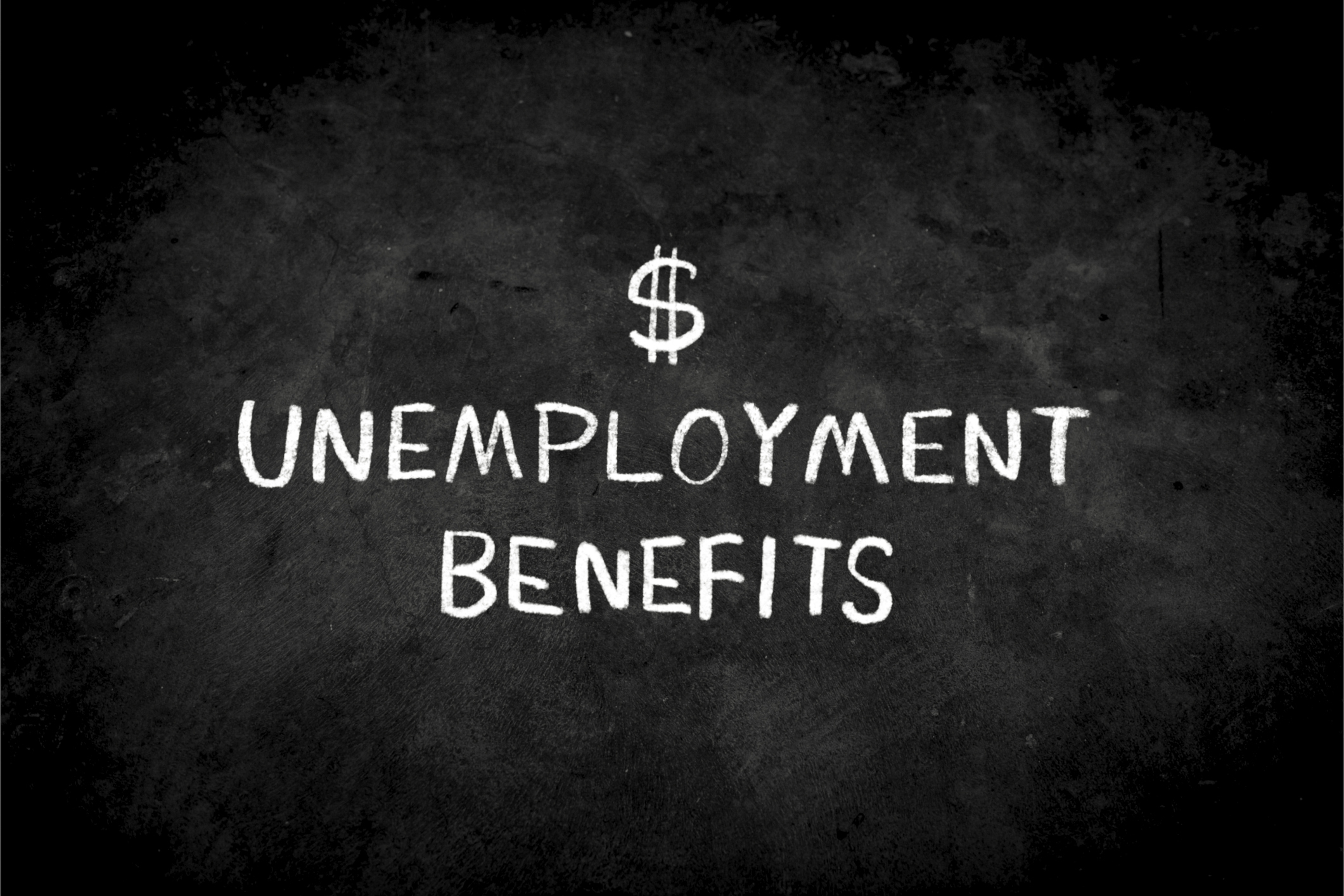Is Unemployment Taxable? A State-by-State Guide
The federal government taxes unemployment benefits. But is unemployment taxable in your state?

- Arizona
- Arkansas
- Colorado
- Delaware
- Georgia
- Hawaii
- Idaho
- Illinois
- Indiana
- Iowa
- Kansas
- Kentucky
- Louisiana
- Maine
- Maryland
- Massachusetts
- Michigan
- Minnesota
- Mississippi
- Missouri
- Nebraska
- New Mexico
- New York
- North Carolina
- North Dakota
- Ohio
- Oklahoma
- Oregon
- Rhode Island
- South Carolina
- Utah
- Vermont
- West Virginia
- Wisconsin

Gabriella Cruz-Martínez
If you’re waiting for an unemployment check, you’ll have to deduct federal income tax on your benefits. Not to mention, your compensation may face some extra taxes.
That’s because some states consider unemployment benefits taxable income, while others don’t. So, how much taxes you face will largely depend on where you live.
As of 2024, only 14 states plus the District of Columbia don’t impose state income taxes on unemployment (though they’ll levy UI taxes). While some states featured on our list levy a flat tax rate, others vary depending on your income threshold. Some of the highest tax rates on our list climb up to 11%.
From just $107.88 $24.99 for Kiplinger Personal Finance
Become a smarter, better informed investor. Subscribe from just $107.88 $24.99, plus get up to 4 Special Issues

Sign up for Kiplinger’s Free Newsletters
Profit and prosper with the best of expert advice on investing, taxes, retirement, personal finance and more - straight to your e-mail.
Profit and prosper with the best of expert advice - straight to your e-mail.
Here’s what you should know states will tax your unemployment in 2024.
States that don’t tax unemployment
Which states don’t tax unemployment benefits? Unemployment benefits are taxable to some degree in most states. Additionally, all 50 states and the District of Columbia levy UI taxes. But you won’t have to pay state income tax on these benefits if you live in one of the states listed below.
The following states (and the District of Columbia) either don’t tax personal income or exempt unemployment income from tax:
Alabama, Alaska, California, District of Columbia, Florida, Montana
Nevada, New Hampshire, New Jersey, Pennsylvania, South Dakota
Tennessee, Texas, Virginia, Washington, and Wyoming
Where is unemployment taxable?
Before turning to states that tax unemployment benefits, it’s important to know that unemployment benefits are taxable at the federal level. The IRS considers unemployment benefits taxable income, and you must claim the benefits as such when you file your federal income tax return.
Before turning to states that tax unemployment benefits, it’s important to know that unemployment benefits are taxable at the federal level. The IRS considers unemployment benefits taxable income, and you must claim the benefits as such when you file your federal income tax return.
Note: You can opt to have a portion of federal taxes withheld from your state unemployment benefit payments. However, you request this since withholding is not automatic for unemployment benefits. You will receive a Form 1099-G containing information showing the total amount of your benefit payments and withholding for a given year.

If you collect unemployment in any other state, you may find yourself with a bigger-than-expected tax bill when you file your state return. Here’s how the states that do tax unemployment will tax your benefits in 2024.
Arizona taxes on unemployment
Arizona taxes unemployment benefits at the same rate regular income is taxed. However, there’s a good chance you’ll pay less income tax in Arizona this year since the state now imposes a flat 2.5% tax rate, regardless of how much you earn (or collect in unemployment).
- The previous income tax rate in Arizona was 2.98%.
- The reduced tax rate went into effect one year earlier than planned.
Arkansas state unemployment tax
Arkansas considers your unemployment benefits taxable income, but the state doesn’t have a flat income tax rate like Arizona does. That means how much tax you pay depends on which tax bracket you fall into.
The Arkansas Division of Workforce Services (DWS) also offers claimants the option of deducting 10% of their weekly benefit to pay your federal income tax.
- The tax rate is 2% for taxable income between $5,100 to $10,299.
- If your taxable income is more than $24,300, you’ll pay a 4.7% tax rate.
- Taxpayers with net incomes over $84,500 may reach higher tax rates sooner than the brackets noted above.
Colorado taxes on unemployment
Colorado will tax your unemployment as regular income, but there’s no need to worry about which tax bracket you fall into. You’ll pay a flat 4.4% Colorado state income tax rate in 2024, regardless of your income level.
Delaware unemployment tax
Delaware will tax your unemployment benefits, but how much will you pay? That depends on your yearly income. You’re subject to a Delaware income tax rate of at least 2.20% if your taxable income is less than $2,000. But you could owe the state more.
- If your taxable income is between $5,000 and $25,000, you could pay a tax rate up to 5.55%.
- Delaware taxes income greater than $60,000 at a 6.6% rate.
Georgia unemployment tax
Unemployment benefits are taxable in Georgia, and most filers will pay a flat 5.49% state income tax rate. Georgia may reduce the tax rate to 4.99% by 2029, but that will only happen if specified targets are met.
- Georgia will move to a 5.49% flat tax rate in 2024.
- Georgia may reduce the tax rate to 4.99% by 2029, but that will only happen if specified targets are met.
Hawaii unemployment tax
You can’t escape state taxes in Hawaii. The state taxes unemployment benefits to the same extent as the federal government. There are 12 income tax brackets in Hawaii. The lowest bracket comes with a 1.4% tax rate, but most Hawaii residents will pay more.
- Income tax rates in Hawaii range from 7.6% to 10% for single filers with income between $24,000 and $175,000.
- If your taxable income exceeds $200,000 ($400,000 for joint filers), you’re subject to an 11% tax rate.
Idaho income tax
Idaho is another state that taxes unemployment benefits, and you’ll pay the same tax rate, regardless of your income. That’s because Idaho moved to a flat income tax rate of 5.8% for all taxable income over $2,500 ($5,000 for joint filers) in 2023. That’s good news if you’re a high-earner, but the flat tax rate means people with lower incomes may pay more than they would in other states.
Illinois unemployment tax
Unemployment benefits are taxed in Illinois, and it is another state with a flat tax rate. However, taxpayers in Illinois pay nearly one percent less than Idaho residents. Illinois’ flat tax rate of 4.95% creates a lower tax burden for people with higher incomes, but taxpayers with lower incomes may pay more tax in Illinois than in other states.
Indiana unemployment taxes
Indiana taxes unemployment benefits, but residents are luckier than some. Indiana imposes a flat tax rate of 3.15%, which is much lower than in many states. That rate is also lower than Indiana's tax rate last year.
- In 2022, Indiana imposed a flat tax rate of 3.23%.
- Indiana residents may be able to deduct a portion of unemployment benefits from their taxable income.
Iowa taxes on unemployment income
Unemployment income is fully taxable in Iowa, so be prepared for a possible tax bill when you file your state tax return. Even if your taxable income is low, you could be taxed at a 4.4% tax rate, which is high considering how low tax brackets are taxed in most states.
- Iowa taxes income up to $6,210 are taxed at a 4.4% rate.
- Taxpayers with an income above $6,210 to $31,050 are taxed at a 4.82% rate.
- Income tax rates in Iowa max out at 5.70% for incomes above $31,050.
- The state will move to a 3.9% flat rate in 2026.
Is unemployment taxable in Kansas?
Unemployment benefits are subject to Kansas state income tax, but how much will you pay? That depends on how much money you make in 2024. However, tax brackets in the state max out at 5.7%, which is low compared to many states.
- The low tax bracket of 3.1% applies to single filers with income under $15,000.
- Taxpayers with incomes above $15,000 but not over $30,000 are subject to a 5.25% tax rate.
- Taxpayers with income over $30,000 in income are subject to the 5.7% tax rate.
Kentucky tax on unemployment benefits
Kentucky taxes unemployment benefits to the same extent as federal law, but you won’t have to guess your state tax rate. That’s because Kentucky imposes a flat income tax rate of 4% for 2024.
Louisiana tax on unemployment
In Louisiana, you’ll pay between 1.85% and 4.25% on your unemployment benefits. That’s because the Pelican State taxes unemployment to the same extent as the federal government. So, what state tax rate will you pay? It depends on your total yearly income.
- You will pay a 1.85% tax rate with income up to $12,500 (up to $25,000 for joint filers).
- If your income range is between $12,501 and $50,000 ($25,001 to $100,000 for joint filers), you are subject to a 3.5% tax rate.
- Filers with income over $50,000 ($100,000 for joint filers) will pay a 4.25% tax rate.
Maine unemployment tax
Maine taxes unemployment benefits, and income tax rates are higher for many filers in Maine than in other states. That’s because the lowest tax bracket in Maine is 5.8%. That’s higher than the highest tax rate in some states.
- The tax rate jumps to 6.75% for income over $26,050 (over $52,100 for joint filers).
- The highest tax rate is 7.15% in Maine and applies to income over $61,600 (over $123,250 for joint filers).
Is unemployment income taxed in Maryland?
The good news is Maryland’s income tax rates max out at 5.75%. The bad news is the state taxes income under just $1,000 at 2%, including unemployment benefits. How much Maryland income tax will you pay?
- Even taxpayers with income up to $3,000 are subject to a 4% tax rate.
- Taxpayers with income up to $100,000 ($150,000 for joint filers) fall into the 4.75% tax bracket.
- If your income exceeds $250,000 ($300,000 for joint filers) your tax rate is 5.75%.
Massachusetts taxes on unemployment
Massachusetts taxes unemployment benefits, but the state will tax you a flat 5% income tax rate unless you made over $1 million in 2024. In that case, you must pay the Massachusetts millionaire’s tax, which went into effect this year.
- The millionaire tax in Massachusetts is an additional 4% on income over $1 million. That equals a tax rate of 9%.
- Revenue from the tax helps to fund school lunches for Massachusetts students.
Michigan taxes on unemployment
Unemployment income is taxable in Michigan, but figuring out how much state tax you owe is easier in Michigan than it is in most other states. That’s because the Wolverine State imposes a flat income tax rate.
- For 2024, Michigan’s flat income tax rate is 4.25%.
- Keep in mind that municipalities in Michigan may tax other income, such as wages.
Tax rate for unemployment in Minnesota
Minnesota taxes unemployment benefits, and to make matters worse, the state imposes higher income tax rates than most. The lowest state tax rate is 5.35% and applies to income up to $31,690 ($46,330 for joint filers). If your income is higher, you will pay even more.
- If your income falls between $31,690 and $104,090 ($46,330 to $184,040 for joint filers), your Minnesota income tax rate is 6.8%.
- The state tax rate climbs to 7.85% for incomes between $104,090 to $193,240 ($184,040 to $321,450 for joint filers).
- Your income tax rate in Minnesota is 9.85% if your taxable income is higher than the amounts listed above.
Mississippi state unemployment tax
Mississippi taxes your unemployment benefits at a flat 4.7% income tax rate, but there is good news for residents in the future. The 4.7% tax rate is set to reduce over the next few years, thanks to recent legislation passed by lawmakers. Here’s what Mississippians will pay — and when:
- 4.4% in 2025
- 4.0% in 2026
Missouri unemployment tax
In Missouri, your unemployment benefits are considered taxable income. However, many state residents will pay less income tax this year. That’s because Missouri’s top tax bracket was recently reduced from 4.95% to 4.8% in 2024.
- Missouri residents with taxable income above $8,911 are subject to the 4.8% tax rate.
- However, the first $1,273 of income is tax-exempt.
Nebraska state unemployment tax
Nebraska is another state that taxes unemployment benefits, and many taxpayers fall into the state’s top income tax bracket. That’s because the highest bracket applies to taxable income over $27,000 (more than $54,000 for joint filers). The rate for the top tax bracket is set to gradually reduce over the next few years though. Here’s what Nebraskans who fall into this bracket will pay in the coming years.
- 6.44% in 2024
- 6.24% in 2025
- 6% in 2026
- 5.84% in 2027
New Mexico unemployment tax rate
New Mexico income taxes on unemployment benefits range from 1.7% to 5.9% Single filers making $11,000 or are subject to a tax rate up to 4.7%. Joint filers can make up to $24,000 without surpassing the 4.7% rate. Higher earners pay even more taxes in New Mexico.
- New Mexico’s income tax rate is 4.9% for incomes between $16,001 to $210,000 ($24,001 to $315,000 for joint filers).
- All New Mexicans with taxable incomes higher than the amounts above are subject to the state’s highest tax rate of 5.9%.
There’s some good news. Starting 2025, all New Mexico taxpayers will benefit from the first major adjustment to the state income tax structure since 2005.
The new structure adds a sixth bracket with a 4.3% rate, and lowers the starting tax rate to 1.5%. The new brackets for 2025 are as follows:
Tax Rate | Income | Fixed Tax |
1.5% (lowered) | Under $5,500 | $0 |
3.2% | $6,500 - $16,500 | $82.50 |
4.3% (new) | Over $16,500 - $33,500 | $434.50 |
4.7% | Over $33,500 - $66,500 | $1,165.50 |
4.9% | Over $66,500 -$210,000 | $2,716.50 |
5.9% | Over $210,000 | $9,748.00 |
New York state unemployment tax
You can’t escape paying income tax on unemployment benefits in New York. The Empire State considers your unemployment payments taxable income, and the state has nine income brackets. That means how much state taxes you pay can vary greatly, depending on your annual taxable income.
- Income tax rates start at 4% in New York and apply to taxable income up to $8,500 ($17,150 for joint filers).
- However, the highest tax rate of 10.9% only applies if your income exceeds $25,000,000, so most New Yorkers pay a tax rate somewhere between the two.
North Carolina unemployment tax
There’s some good news and some bad news when it comes to North Carolina unemployment tax. The state currently taxes these benefits at a flat tax rate of 4.5%. That is high for taxpayers with lower incomes but low for the highest-earning residents (compared to other states).
- North Carolina’s flat income tax rate is set to gradually reduce over the next four years.
- In 2027, the flat tax rate will be 3.99%.
North Dakota unemployment tax
North Dakota taxes unemployment benefits, but many residents won’t pay a dime to the state this year. That’s because recently enacted legislation exempts income up to $44,725 for single filers. Other taxpayers catch a break, too.
- Taxpayers with higher incomes only pay an income tax rate of 1.95% or 2.5%. That’s much lower than most other states in the country.
Ohio unemployment tax rate
Ohio considers unemployment benefits taxable income, but the state imposes lower tax rates than many other states. For example, top earners in Ohio pay a 3.5% state income tax rate.
- In 2024, the 3.75% (for incomes over $115,000) tax bracket will be eliminated.
- The highest tax bracket will be taxed at 3.5% in 2024 and will apply to taxable income over $92,150.
- Taxpayers with incomes up to $26,050 have a tax rate of 2.750%.
Are Oklahoma unemployment benefits taxed?
Oklahoma taxes unemployment benefits, and most residents will pay the top income tax rate of 4.75%. That’s because this tax rate applies to taxable income over $7,200 ($12,200 for joint filers). If your taxable income is below this amount, here’s you much Oklahoma income tax you might pay.
- 0.25% on up to $1,000 ($2,000 for joint filers)
- 1.75% on income from $2,500 to $3,750 ($5,000 to $7,500 for joint filers)
- 2.75% on income from $3,750 to $4,900 ($7,500 to $9,800 for joint filers)
Oregon unemployment tax
Oregon taxes unemployment benefits. And to make matters worse, the state has higher income tax rates than most. Depending on your annual taxable income, you can expect to pay an Oregon tax rate between 4.75% and 9.9%.
- Oregon residents with income up to $4,300 will pay the low 4.75% tax rate.
- The highest income tax rate of 9.9% applies to taxable income over $125,000.
Rhode Island unemployment taxes
Unemployment benefits are considered taxable income in Rhode Island, and you may wind up paying a 3.75% state income tax rate, even if you made very little. The lowest tax bracket of 3.75% applies to taxable income below $77,450.
- You could pay a 4.75% tax rate if your taxable income is over $77,450 but not over $176,050.
- The Oregon income tax rate for taxable income over $176,050 is 5.99%.
South Carolina unemployment tax
South Carolina taxes unemployment income and most state residents are subject to the highest income tax bracket of 6.4%. That’s because this tax rate applies to taxable income over $17,330. Here’s how much you might pay in South Carolina income tax if your income falls below this threshold:
- Income up to $3,460 is tax-exempt.
- South Carolina’s income tax rate is 3% for taxable income over $3,460 to a limit of $17,330.
Utah unemployment tax
If you collect unemployment benefits in Utah this year, you’ll pay state income tax on the payments you receive. However, you won’t have to figure out which tax bracket you fall into. Utah has a flat income tax bracket of 4.55%. That means you’ll pay a 4.55% tax rate whether you make $20,000 or $200,000 in 2024.
Vermont state unemployment tax
Vermont taxes unemployment as taxable income, but it’s possible to escape Vermont’s state income tax if your income falls below specified thresholds set by the state. For 2024, incomes up to $45,400 will have a 3.35% tax rate. Here’s how much you’ll pay if you make more money this year.
- 6.6% on taxable income from above $45,400.
- 7.6% on taxable income above $110,050, but not over $229,550.
- Filers will pay the highest Vermont income tax rate of 8.75% if they make more than the amounts listed above.
Unemployment tax in West Virginia
West Virginia taxes unemployment income to the same extent it’s taxed by federal law. However, West Virginia income tax rates max out at 5.12%, which is lower than the highest tax brackets in many states. The 5.12% tax bracket applies to taxable income over $60,000.
- The lowest West Virginia tax rate of 2.36% applies to income up to $10,000.
- Taxpayers with incomes that fall over $10,000 and $40,000 pay a tax rate between 3.15% and 4.72%.
- Those with incomes above $60,000 will have a tax rate of 5.12%.
Is unemployment taxable in Wisconsin?
Unemployment is taxable in Wisconsin. However, some residents can exclude a portion of their payments from taxable income for state tax purposes. To find out if you can exclude any of your unemployment benefits, complete Wisconsin Schedule SB. Wisconsin has four income tax brackets.
- 3.50% on up to $14,320 (up to $19,090 for joint filers)
- 4.40% incomes over $14,320 but not over $28,640 ( over $19,090 but not over $38,190 for joint filers)
- 5.30% for taxable income over $28,640 to $315,310 (over 38,190 but not over $420,420 for joint filers)
- 7.65% for income amounts above the thresholds listed above
Related Content
Profit and prosper with the best of Kiplinger's advice on investing, taxes, retirement, personal finance and much more. Delivered daily. Enter your email in the box and click Sign Me Up.

Katelyn has more than 6 years of experience working in tax and finance. While she specialized in tax content while working at Kiplinger from 2023 to 2024, Katelyn has also written for digital publications on topics including insurance, retirement, and financial planning and had financial advice commissioned by national print publications. She believes knowledge is the key to success and enjoys providing content that educates and informs.
- Gabriella Cruz-MartínezTax Writer
-
 What to expect from the global economy in 2026
What to expect from the global economy in 2026The Kiplinger Letter Economic growth across the globe will be highly uneven, with some major economies accelerating while others hit the brakes.
-
 What You Need to Do With Your 401(k) Before 2025 Is Over
What You Need to Do With Your 401(k) Before 2025 Is OverBefore 2025 ends, check your 401(k) contributions, investments, and catch-up eligibility to lock in this year’s tax savings and employer match.
-
 3 Year-End Tax Moves You Can't Afford to Miss
3 Year-End Tax Moves You Can't Afford to MissDon't miss out on this prime time to maximize contributions to your retirement accounts, do Roth conversions and capture investment gains.